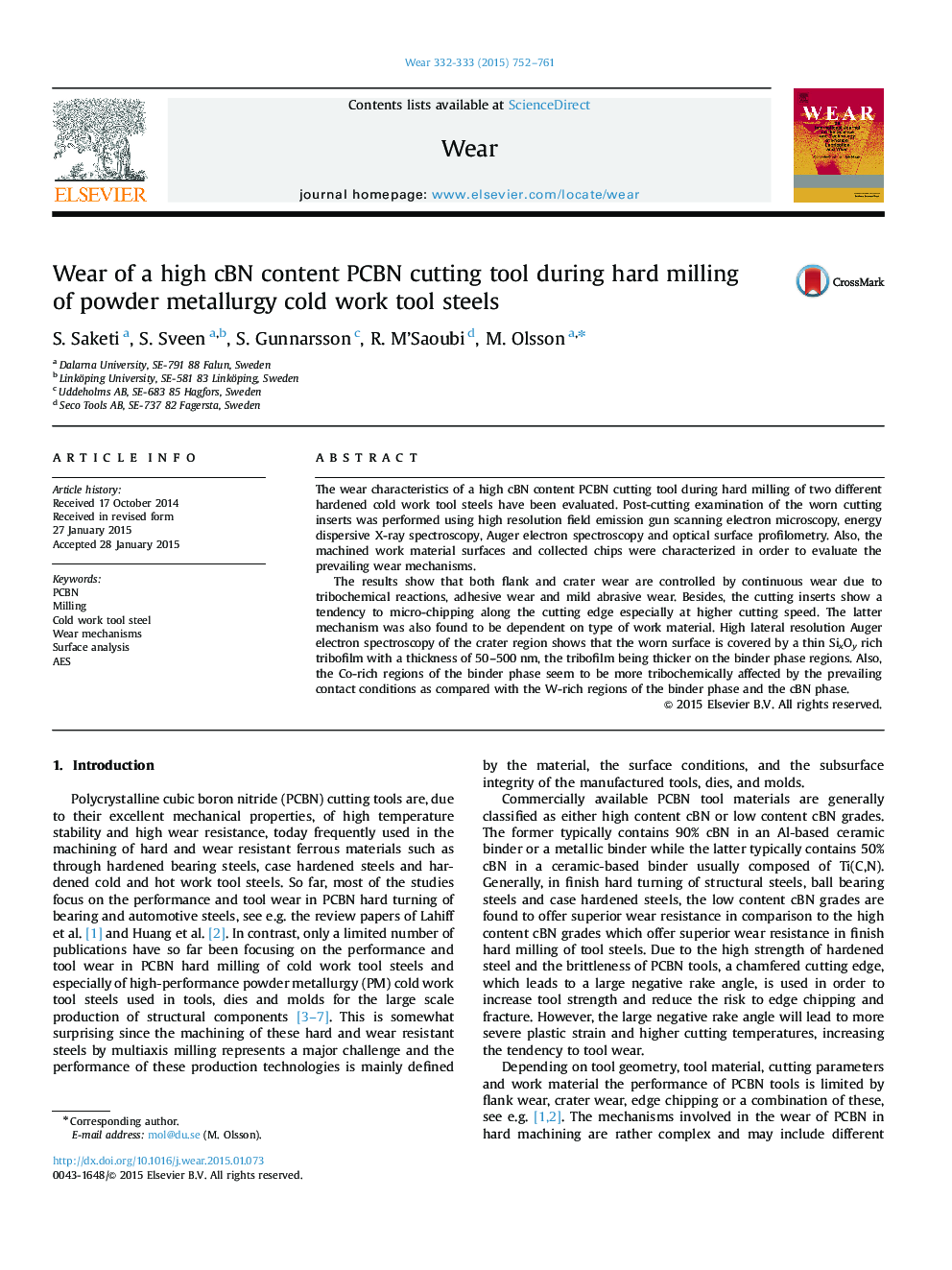| Article ID | Journal | Published Year | Pages | File Type |
|---|---|---|---|---|
| 617077 | Wear | 2015 | 10 Pages |
Abstract
The results show that both flank and crater wear are controlled by continuous wear due to tribochemical reactions, adhesive wear and mild abrasive wear. Besides, the cutting inserts show a tendency to micro-chipping along the cutting edge especially at higher cutting speed. The latter mechanism was also found to be dependent on type of work material. High lateral resolution Auger electron spectroscopy of the crater region shows that the worn surface is covered by a thin SixOy rich tribofilm with a thickness of 50-500Â nm, the tribofilm being thicker on the binder phase regions. Also, the Co-rich regions of the binder phase seem to be more tribochemically affected by the prevailing contact conditions as compared with the W-rich regions of the binder phase and the cBN phase.
Related Topics
Physical Sciences and Engineering
Chemical Engineering
Colloid and Surface Chemistry
Authors
S. Saketi, S. Sveen, S. Gunnarsson, R. M'Saoubi, M. Olsson,
